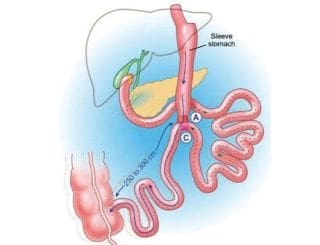
If you need to lose a lot of weight, you may be asking yourself which is better, weight loss surgery or GLP-1 receptor agonists? These include medications such as Wegovy (Ozempic & semaglutide) and Zepbound (Mounjaro & tirzepatide). Many people think that these medications much be better because they are newer, and you can’t even turn on the TV or browse the internet without seeing a zillion stories about them. So what are the real-world expectations for these two powerful weight loss methods? Let’s take a look!
Being both a weight loss surgeon and obesity management physician for over 20 years, I have seen many medications and treatment options come and go. With respect to these new medications, although they have been around for a while for treating diabetes, we really don’t have any significant long-term data on using them forever at the higher dosages required for weight loss. Also, studies are now coming out that show nearly all patients will regain their weight after stopping the drug. So, many patients aren’t aware that, if they want to keep the weight off, they must stay on a drug forever that has not been studied over a time period anywhere near forever. In contrast, weight loss surgeries such as gastric sleeve (VSG), gastric bypass, and SADI have been studied and results have been published in some series spanning over 20 years.
So, we have to look beyond the short-term and think about where patients might be in their weight loss journey in five, ten, or even twenty years.
GLP-1 Receptor Agonists

If, for example, a patient opts for Wegovy–what will be the scenario? Here are some things to think about:
- Most insurance plans do not cover Wegovy. It’s very expensive at over $1000 a month for the brand-name medication.
- Even though Wegovy is still under patent, since the FDA placed it on their shortage list, the generic equivalent (semaglutide) is currently available.
- This ranges anywhere from $300-$500 per month, including required office visits.
- If at any time the patient chooses to stop semaglutide, the weight will almost certainly return.
- If the patient continues on medication, they will have paid out-of-pocket around $24,000 at 5 years, $48,000 at 10 years, and $96,000 at 20 years!
- The patient will be injecting a medication once a week that has not been tested at these high dosages beyond a couple of years. We have no idea what will happen to patients who use these medications on a permanent ongoing basis.
- The amount of weight loss with a surgical procedure such as a VSG, gastric bypass, or SADI is typically two to three times more than with even the most potent of these drugs.
- At the 5 year mark, semaglutide patients lost on average 16% of the total body weight. For a 300 lb patient, that would equate to only 48 pounds, leaving the patient still morbidly obese.
Surgical Weight Loss

When considering weight loss surgery vs. GLP-1 receptor agonists, we should look at the surgical options next. Since we are considering the most powerful weight loss medications, let’s also look at the most powerful weight loss surgery–the SADI-S procedure. SADI-S stands for single anastomosis duodeno-ileal bypass with sleeve gastrectomy. The SADI-S is definitely number one in terms of total weight loss and long-term success rate. Studies show weight loss results of:
- 5 years
- 87% excess body weight loss
- This means if a patient is 100 lbs over their ideal body weight, they would lose 87% of that, or 87 lbs.
- 38% total body weight loss
- This means that if a patient weighs 300 lbs going in to surgery, they would lose 38% of that, or 114 lbs.
- 87% excess body weight loss
- 10 years
- 80% excess body weight loss
- 34% total body weight loss
No GLP-1 medication can come anywhere close to these numbers! In addition to the weight loss, SADI-S is very effective at controlling or eliminating diabetes, high blood pressure, high cholesterol, and sleep apnea.
Now, with regard to cost comparison, even in the worst-case scenario where the patient has no surgical weight loss coverage, the current self-pay pricing at JourneyLite is $15,900. This is equivalent to about four years of treatment with semaglutide. So even self-pay surgery is much more cost effective in the long-run. Obviously, if a patient has insurance coverage, then the benefit can be even more pronounced. Other surgical options such as VSG/gastric sleeve, although not as potent as SADI-S, are also more affordable and have somewhat lower short and long term risk.
Conclusion
At JourneyLite, we offer many different programs to help patients lose weight. Our experienced team knows that there is not a one-size-fits-all solution to obesity and that patients must make their own individual choices based on their specific goals. Although surgical procedures such as SADI-S, VSG/gastric sleeve, and gastric bypass provide 2-3 times greater weight loss than GLP-1 medications, there can be a role for these drugs. However, the long-term side effects have not been well studied and the weight regain rate approaches 100% if patients choose to come off of them.


